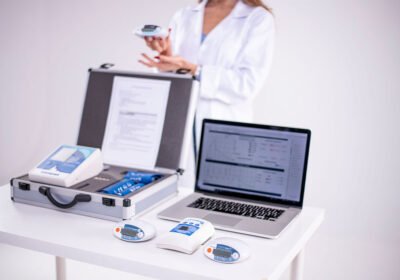Pulse wave velocity (PWV), recognized as the primary parameter for assessing arterial stiffness, serves as a potential indicator for early detection of atherosclerosis. What is pulse wave velocity? It’s the speed at which the pressure wave, initiated by ventricular contraction, travels through the arteries.
Arterial stiffness impacts how easily arteries can dilate and contract. This means that during each cardiac cycle (heartbeat), the arteries push back against the blood flow. This resistance makes the pulse wave, the pressure wave from the cardiac cycle, move faster through the stiffened arteries. Due to this quicker flow, a higher PWV is expected.
Pulse Wave Velocity Normal Range
As previously described, PWV serves as the premier method for quantifying arterial stiffness. Consequently, awareness of the normal range for PWV could assist physicians in initiating early interventions for lowering levels of arterial stiffness. PWV values depend on both the method used and the device.
In 2007, the ESH/ESC hypertension guidelines established a threshold of 12 m/s for carotid-femoral pulse wave velocity. However, this threshold was subsequently revised to 10 m/s in 2013. Various research studies have found that aortic PWV, rather than carotid-femoral PWV, serves as a strong predictor of future cardiovascular events and all-cause mortality. Consequently, knowing the normal range of aortic PWV for each individual plays a significant role in the management of hypertension.
Pulse Wave Velocity By Age
Based on the 2009 study by Benczúr et al, which included over 17,000 subjects, arterial stiffness measurements were performed using the Arteriograph, recognized as a gold standard device. The table below illustrates the normal range for PWV by age.
| Age category (years) | Median aoPWV (m/s) |
| 2 – 12 | 5.44 |
| 12 – 22 | 6.08 |
| 22 – 32 | 6.69 |
| 32 – 42 | 7.29 |
| 42 – 52 | 8.38 |
| 52 – 62 | 9.81 |
| 62 – 72 | 10.15 |
| 72 – 82 | 10.41 |
| 82 – 92 | 11.02 |
It should be noted that according to this study, these normal PWV values belong to subjects with optimal or normal blood pressure values and no additional cardiovascular risk factors.
It’s important to highlight that with each 1 m/s rise in the PWV, there is a corresponding 15% increase in the likelihood of future cardiovascular events. This suggests that monitoring PWV could be crucial in predicting and managing cardiovascular health.
Pulse Wave Velocity Calculation
PWV is calculated by measuring the time difference between two pulses (The direct pulse wave and the reflected pulse wave), known as return time and aorta length.
The direct pulse wave occurs when the heart ejects blood into the aorta during each heartbeat. This wave travels through the aorta. At the point where arteries branch (bifurcation), the wave is reflected back toward the heart as the reflected pulse wave. Studying the characteristics of this reflected pulse wave can reveal important insights into the elasticity of the aorta.
The length of the aorta for measuring Aortic Pulse Wave Velocity is defined as the distance (S) between the jugular (Jug) and the symphysis (Sy).

Pulse Wave Velocity Formula
As the previous section mentioned, the PWV is based on the return time of the pulse wave in the Aorta and also the length of the Aorta. The PWV formula is presented below:
PWV = S (Jug-Sy)/(RT/2)

Pulse Wave Velocity Measurement & Arteriograph
The Arteriograph is the preferred device for measuring aortic pulse wave velocity, a critical parameter for assessing cardiovascular health. Its accuracy has been validated through comparisons with invasive methods, and leading research institutes have endorsed it as the most reliable product available. In addition to measuring PWV, the Arteriograph is capable of assessing pulse wave analysis parameters, including central blood pressure and the augmentation index.
Performing Pulse Wave Velocity measurement with the Arteriograph is very simple and is chosen as the best and most convenient method with the highest accuracy. The operator has minimal effect on the measurement as it is fully automatic.
Contact us to get answers to any questions you may have or to get a quote for the Arteriograph set.


